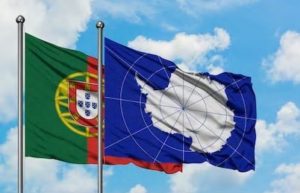 A cooperation agreement between the Portuguese Polar Program (PROPOLAR) and the Bulgarian Antarctic Institute has been signed at the University of Lisbon. The occasion was the tenth anniversary of the start of Bulgarian-Portuguese studies in Antarctica and the establishment of Portugal’s National Polar Program.
A cooperation agreement between the Portuguese Polar Program (PROPOLAR) and the Bulgarian Antarctic Institute has been signed at the University of Lisbon. The occasion was the tenth anniversary of the start of Bulgarian-Portuguese studies in Antarctica and the establishment of Portugal’s National Polar Program.
Although the Polar Regions are far from Portugal, their dynamics affect the entire Planet. Portugal aims at benefiting of the excellent conditions of the Polar Regions as vantage points for conducting research in the frontiers of science, with strong international cooperation and excellent conditions for technological development and cutting-edge research.
International Polar Year (IPY) 2007-2008’s event was the starting point to establish the foundations for a Portuguese Polar Program, a task promoted by the Portuguese Polar science community.
In 2007, the Portuguese Foundation for Science and Technology (FCT) implemented the Portuguese Polar Program (PROPOLAR) and funded research projects on atmospheric physics, cryosphere and polar biology, in the sub-Antarctic and the Antarctic.
The Portuguese Polar Program (PROPOLAR) working in close connection with the Polar Office from FCT, is the organization coordinating the Portuguese Polar campaigns. Since Portugal has no permanent infrastructure in the Polar Regions, research is based on international cooperation and on the management and sharing of an Antarctic flight offered to partner programs. In the past five years, PROPOLAR has funded 49 research projects, provided access of 22 Portuguese scientists per year to the Polar Regions, and supported and managed 10 Antarctic flights, ensuring transport for 429 passengers and cooperating with 7 national polar programs.
Maybe one day we can enjoy some HF contacts operating from Portuguese Hams from Antarctica … who knows?

 WAP is looking for some pics of Refugio Cabo Gutierrez Vargas (WAP CHL-NEW) which is located 1Km close to the Presidente Aguirre Cerda Base (WAP CHL-Ø4). On several websites it is reported that ruins of the Refuge are still in place. On last 2011, Mehdi F5PFP was very close to it, when he did activate Presidente Aguirre Cerda Base (CE9XX, see QSL on the side); Mehdi reports to have seen the remaining of this Refuge but he did not take direct picture of it!
WAP is looking for some pics of Refugio Cabo Gutierrez Vargas (WAP CHL-NEW) which is located 1Km close to the Presidente Aguirre Cerda Base (WAP CHL-Ø4). On several websites it is reported that ruins of the Refuge are still in place. On last 2011, Mehdi F5PFP was very close to it, when he did activate Presidente Aguirre Cerda Base (CE9XX, see QSL on the side); Mehdi reports to have seen the remaining of this Refuge but he did not take direct picture of it!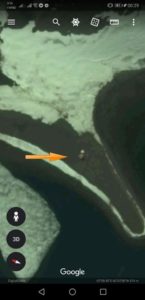 Refugio Cabo Gutierrez Vargas so called in memory of the aviation Captain who died on December 30, 1955, was located at 1 kilometer (0.62 mi) from Aguirre Cerda Station and was inaugurated on February 12, 1956. Its purpose was to serve as a Refuge for the members of the Station in case of fire.
Refugio Cabo Gutierrez Vargas so called in memory of the aviation Captain who died on December 30, 1955, was located at 1 kilometer (0.62 mi) from Aguirre Cerda Station and was inaugurated on February 12, 1956. Its purpose was to serve as a Refuge for the members of the Station in case of fire.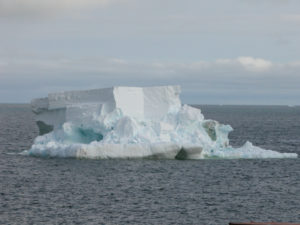 Mobile networks have been assisting scientists with Antarctic research.
Mobile networks have been assisting scientists with Antarctic research.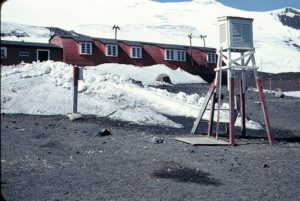 In 1955 Chile inaugurated its station Pedro Aguirre Cerda at Pendulum Cove (62°56 South, 60°36 West), to increase the Chilean presence in the sector claimed by that nation.
In 1955 Chile inaugurated its station Pedro Aguirre Cerda at Pendulum Cove (62°56 South, 60°36 West), to increase the Chilean presence in the sector claimed by that nation.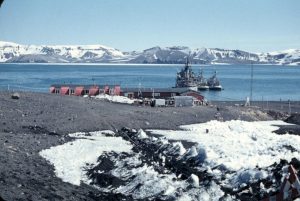 In 1969, a violent volcanic eruption demolished the Chilean stations Pedro Aguirre Cerda and Gutierrez Vargas Refuge. Remains at Whalers Bay include rusting boilers and tanks, an aircraft hangar and the British scientific station house (Biscoe House), with the middle torn out by the 1969 mudflows. A bright orange derelict airplane fuselage was removed in 2004. Deception Island has become a popular tourist stop in Antarctica because of its several colonies of chinstrap penguins, as well as the novel possibility of making a warm bath by digging into the sands of the beach.
In 1969, a violent volcanic eruption demolished the Chilean stations Pedro Aguirre Cerda and Gutierrez Vargas Refuge. Remains at Whalers Bay include rusting boilers and tanks, an aircraft hangar and the British scientific station house (Biscoe House), with the middle torn out by the 1969 mudflows. A bright orange derelict airplane fuselage was removed in 2004. Deception Island has become a popular tourist stop in Antarctica because of its several colonies of chinstrap penguins, as well as the novel possibility of making a warm bath by digging into the sands of the beach.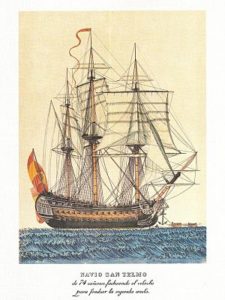 In 1819, the Sailing Vessel San Telmo, commanded by Captain Joaquín de Toledo y Parra, was the flagship of a Spanish naval squadron under Brigadier Rosendo Porlier y Asteguieta bound for Callao (Peru) to reinforce colonial forces there fighting the independence movements in Spanish America. Damaged by severe weather in the Drake Passage, south of Cape Horn, it sank in September 1819.
In 1819, the Sailing Vessel San Telmo, commanded by Captain Joaquín de Toledo y Parra, was the flagship of a Spanish naval squadron under Brigadier Rosendo Porlier y Asteguieta bound for Callao (Peru) to reinforce colonial forces there fighting the independence movements in Spanish America. Damaged by severe weather in the Drake Passage, south of Cape Horn, it sank in September 1819.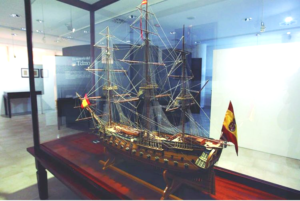 an Telmo Island off the north coast of Livingston Island is named after the ship.
an Telmo Island off the north coast of Livingston Island is named after the ship.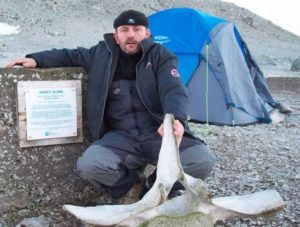 On WAP website, we have recently add a new page called “Arctic & Antarctic Global Program”, a French proposal for Hams, launched years ago by F
On WAP website, we have recently add a new page called “Arctic & Antarctic Global Program”, a French proposal for Hams, launched years ago by F , Port Mikkelsen bay, Trinity Island, one of the Palmer archipelago. It was inaugurated by the Argentine Navy on December 10th , 1954. Its original name was Port Mikkelsen Refuge.
, Port Mikkelsen bay, Trinity Island, one of the Palmer archipelago. It was inaugurated by the Argentine Navy on December 10th , 1954. Its original name was Port Mikkelsen Refuge.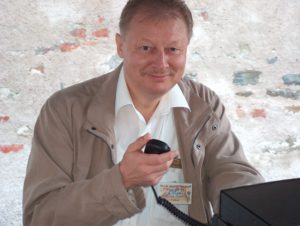 Volker Strecke, DL8JDX (pic taside) informs that next 14th November 2019 in Dresden, Germany there will be an Antarctic Meeting of many Polar Veterans on the occasion of 30th Anniversary of the border opening between former East and West Germany and the later reunification as well as the related impressions from that time at Georg Forster (WAP DDR-Ø1)and Neumayer II (WAP DEU-Ø2) Stations.
Volker Strecke, DL8JDX (pic taside) informs that next 14th November 2019 in Dresden, Germany there will be an Antarctic Meeting of many Polar Veterans on the occasion of 30th Anniversary of the border opening between former East and West Germany and the later reunification as well as the related impressions from that time at Georg Forster (WAP DDR-Ø1)and Neumayer II (WAP DEU-Ø2) Stations.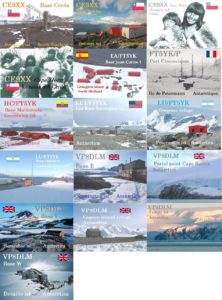
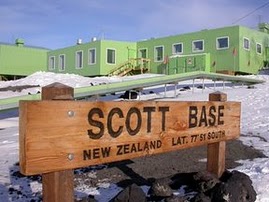 Scott Base (WAP NZL-Ø1) is getting old. Antarctica NZ wants a complete replacement; to dom that plan, Antarctica New Zealand must raise $50 million in charitable donations as part of its $250m Scott Base rebuild.
Scott Base (WAP NZL-Ø1) is getting old. Antarctica NZ wants a complete replacement; to dom that plan, Antarctica New Zealand must raise $50 million in charitable donations as part of its $250m Scott Base rebuild.